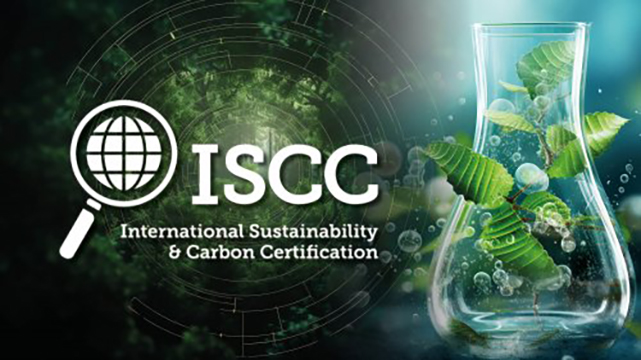More news
- Focus on industrial: Powering the energy industry during extreme heat
- Focus on powder coatings: The coatings industry’s transition to PFAS/PTFE-free solut...
- “We see sustainability as a purpose, as a reason for doing business” – P...
- Focus on industrial: High-performance coating protects tanks at biopolymer production plan...
- Focus on powder coatings: Novel high-speed crosslinking technology

David Park, British Coatings Federation, discusses the latest regulatory and government updates affecting the UK coatings industry
Sometimes in the coatings sector, even those of us whose job descriptions don’t require much pure technical knowledge get caught up in the weeds of regulatory detail. In previous articles for PPCJ the British Coatings Federation (BCF) has related how, for instance, we have been lobbying on the detail of new UK chemical regulations, including UK REACH, ever since Brexit. Much of our government affairs work is about engaging with specialists across the alphabet spaghetti soup of government departments and agencies, assisting with the interpretation and development of technical guidelines. At the other end of the spectrum, there is perhaps an expectation that people know what ‘coatings’ are, when often, beyond ‘paint’, most people outside of the industry and other sectors that work with them daily won’t have much of an idea at all.
So, the British Coatings Federation recently launched a new report: Essential Coatings. It sets out to explain to non-specialists – and especially political stakeholders and other decision-makers – what coatings are and why they are important.

Through a range of case studies, the Essential Coatings report highlights how coatings are essential to consumers and industry alike. Coatings – decorative paints, industrial coatings, printing inks and wallcoverings – are everywhere, enabling the advancement of industries, including aerospace and defence, infrastructure and energy, healthcare and hygiene – increasing longevity, preventing decay and corrosion, and enhancing the safety of the products and surfaces they are applied to. The report also explores how coatings facilitate effective communication and creativity, helping us – as individuals and groups – to better understand each other, develop ideas, or set ourselves apart.
As the report makes clear, a world without coatings would not only be a less functional one, but also a much duller place.
And, of course, there is a bottom line – the huge contribution the coatings industry makes in financial and economic terms to the UK. It is a £4 billion industry, directly employing 14,000 people: and it is a net exporter. But its impact is far wider, with industries downstream – from health to aerospace – worth around £300 billion GDP per annum relying on coatings products in some way or another, and more than 300,000 people work directly with coatings every day.
In short – coatings are essential, improving liveability, delivering sustainability and helping to drive the economy. Moreover, the coatings sector here in the UK is world-leading, both in terms of current performance and innovation. We are a success story! And we need to shout about it more often and in terms people can understand.
That is why we launched the Essential Coatings report at a reception in the House of Commons. Hosted by Paul Scully MP, it was attended by 100 guests including leaders from the coatings sector, representatives from other trade associations, stakeholders from across Government departments, as well as MPs and Peers.
BCF will be promoting the Essential Coatings report more widely – through the press, across social media, and in many one-on-one and small-scale meetings with stakeholders – throughout the rest of 2024, which is an important election year.
You can read more about the Essential Coatings report here – together with our broad manifesto asks in the shorter, companion document, Manifesto for the Coatings Sector.
CLP Regulations in GB

Having reviewed some of the high-level work we have been doing, the rest of this article will revert back to the weeds of detail and minutiae! Having previously focussed on what was (or was not) happening with UK REACH, let’s take a look at what is happening in the UK with Classification Labelling and Packaging Regulation (CLP).
As readers will know, CLP is based on the United Nations’ Globally Harmonised System (GHS). The EU CLP Regulation adopted GHS in all EU Member States in 2009. This regulation was amended and retained in GB law after Brexit (but not in Northern Ireland, which continues to follow the EU) as The GB CLP Regulation. since January 1, 2021, there has been noteworthy divergence between EU CLP and GB CLP and this is likely to increase in future.
Firstly, there has been divergence between EU harmonised classifications and GB Mandatory classifications. EU harmonised classification are updated via Adaptions to Technical Progress (ATPs) which are issued regularly. The 14th, 15th, 16th, 17th, 18th and 19th ATPs all now apply within the EU and the 20th and 21st ATPs have been published with a voluntary transition period that applies. Within GB, future new and revised GB mandatory classification and labelling is determined by scientific experts in the Health and Safety Executive (HSE). The HSE monitors international forums and when an ECHA Committee for Risk Assessment (RAC) opinion is published under the EU CLP Article 37 procedure, the HSE must reach an opinion of its own as to whether to align with RAC or not.
As such, there has been divergence by delay, as the GB updates to Mandatory Classifications lags behind the EU ATPs and in addition, divergence by design, where, for a small proportion of substances analysed so far, the GB Mandatory Classification decision is different to the EU Harmonised Classification.
We are seeing divergence in other areas of CLP too. As part of Brexit, the UK decided (after some mix ups) not to carry over Annex VIII of EU CLP regarding Poison Centre Notifications. (Again, Northern Ireland still follows the EU). Instead, GB CLP removes “mandatory reporting” replacing it with ‘voluntary’ reporting. And more is expected in future because on April 20, 2023 the EU CLP Regulation diverged from the UN GHS by adding new hazard classes – Endocrine Disruptors (‘ED’), Persistent, Bioaccumulative and Toxic (‘PBT’), very Persistent and very Bioaccumulative (‘vPvB’), Persistent, Mobile and Toxic (‘PMT’), and very Persistent and very Mobile (‘vPvM’) – through a Delegated Regulation. However, the UK decided it would not make these changes, instead continuing to follow the GHS and only adopting new hazard classes if they are adopted into UN GHS. Despite transitional periods, this will lead to more divergence in the near future.
We hope to be able to update on UK REACH and on emerging biocides policy in GB in future articles.







